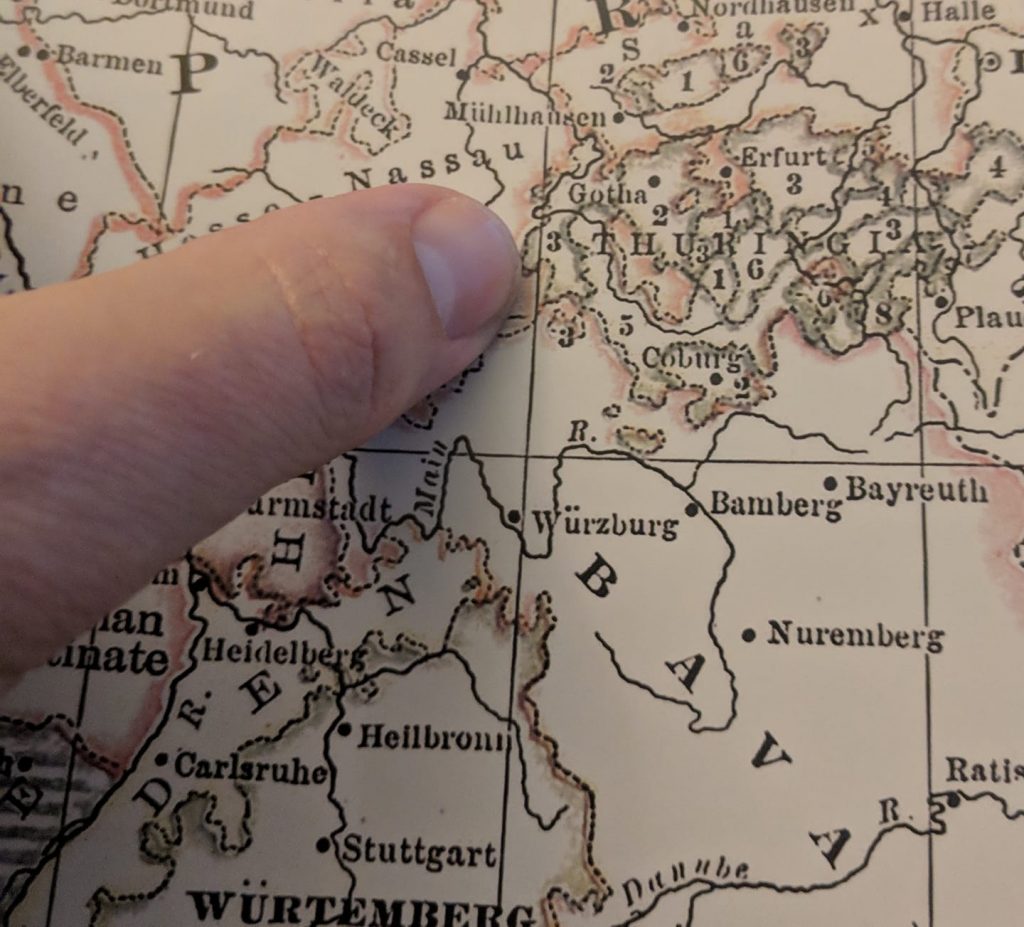
If a picture is worth 1,000 words, then the
Family Tree Historical Atlas of Germany by James Beidler is worth approximately 120,000. The book contains approximately 120 historical maps of Germany and environs (particularly to the east of present-day Germany) showing political boundaries, changes in those boundaries, concentrations of various religious denominations, and a few other demographic details.
The maps in the book run from shortly before the start of the Christian Era to 2019 and are helpful in providing a geographic perspective for those with German ancestors. Beidler admits that not every German village appears on a printed page in the book (and they don’t: Wiesens, Holtrop, Wrisse, Wohlmuthausen, and other hamlets where my own forebears hailed from do not appear). That is not the intent of the book. It’s also not practical to include maps for all the time periods covered that include every village and where it appeared. There are plenty of online references where specific villages can be located relative to other locations. Those sites will help the user to get the most benefit from this book. Determining where a village likely fits by actually searching for it will assist the reader in becoming more familiar with local geography–something every genealogist will benefit from. The book’s about giving the user perspective beyond the village level and focuses on larger political and ethnic regions.
Most of the maps are online, which Beidler readily admits in the introduction. However, it is convenient to have them in one printed reference (in color) instead of hopping from website to website or shuffling through individual printouts (citations to the source of each map are included in this reference). Beider provides a broad historical background in the book as well–not an in-depth litany of ruler and boundary changes. That’s not the book’s purpose. Given the length and focus of the book the history must be abbreviated, but it’s enough to give the reader that all important perspective and hopefully send them to more detailed references.
The book’s also very browsable as well and, if I had a coffee table, it would make an excellent coffee table took. Leafing through it can be an education in itself.
To top if off the book is hardbound. It has the feel of a small text book. That’s appropriate as there’s quite a bit to learn in it.

No responses yet